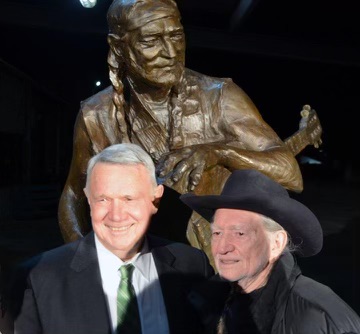Having the flu may have saved former Austin Mayor Lee Leffingwell’s life last spring. Because of his severe symptoms, he had a chest X-ray so doctors could take a closer look into his lungs. That’s when they discovered what’s called a thoracic aortic aneurysm (or TAA).
A TAA is a bulge that develops in the wall of the heart’s aorta. If it bursts, blood can leak outside the heart into the body and prove to be life-threatening. Unfortunately, there are often no symptoms of a TAA and they are usually only detected when a patient is being checked for something else, as with Leffingwell. He didn’t have any symptoms, but when he learned about his condition, he felt like he was a ticking time bomb.
Fortunately, the size and location of his aneurysm didn’t require emergency intervention, but he eventually had open heart surgery a few months later to repair it.
Leffingwell has had friends who have died from this condition, so it hits very close to home.
CTVS board-certified cardiothoracic surgeon Dr. Faraz Kerendi cared for Leffingwell following his aneurysm diagnosis.
When is surgery needed for an aortic aneurysm?
Dr. Kerendi explains that repairing the aneurysm a few months after it’s found is normal under certain conditions, including the size of it.
“Emergency surgery is typically only performed for aneurysms if the patient develops an aortic dissection or tear or if the patient is having chest pain,” he says. Sometimes if we see a very large aneurysm, we would recommend urgent surgical repair within a few days rather than waiting a few weeks or months.”
Dr. Kerendi performed several complex procedures on Leffingwell including repairing a leaky mitral valve and replacing both the dysfunctional aortic valve and the enlarged (aneurysmal) aorta. This required him to be put under a sort of ‘circulatory arrest’ and survive with the help of a heart-lung machine to pump blood while the delicate repairs were being made.
With Dr. Kerendi’s extensive expertise in aneurysm repair and valve replacement, and due to the fact that Leffingwell was already very physically fit prior to the aneurysm, his surgery was successful and he has made a full recovery.
He’s even back to walking three to five miles every day.
What is recovery like following open heart surgery for aneurysm repair?
Dr. Kerendi shares that while recovery following aneurysm repair is different for everyone, “the goal after open heart surgery is to restore quality of life so that patients are able to return to full activity that perhaps they could not do beforehand.”
As February is American Heart Month, now is an excellent time for everyone to take stock of their heart health and seek a cardiac evaluation.
“Be aware of the symptoms of heart disease (such as chest pain or tightness and shortness of breath), and don’t ignore them, especially if you have a family history of heart disease,” cautions Dr. Kerendi. “Many people think they have these symptoms simply because they are getting older, but the underlying reason is that they have heart disease, which is the leading cause of death in the United States.”
Regarding his second lease on life following heart surgery, Leffingwell says “this is the only body that you’re ever going to have so you have to take good care of your heart by committing to the tried and true things like exercise, a good diet, and not smoking.”
For questions about any of our cardiac, thoracic, or vascular services, please visit ctvstexas.com or call us at (512) 459-8753 to schedule an appointment.
Don’t forget to follow us on Facebook and Twitter and check our blog for regular updates.

